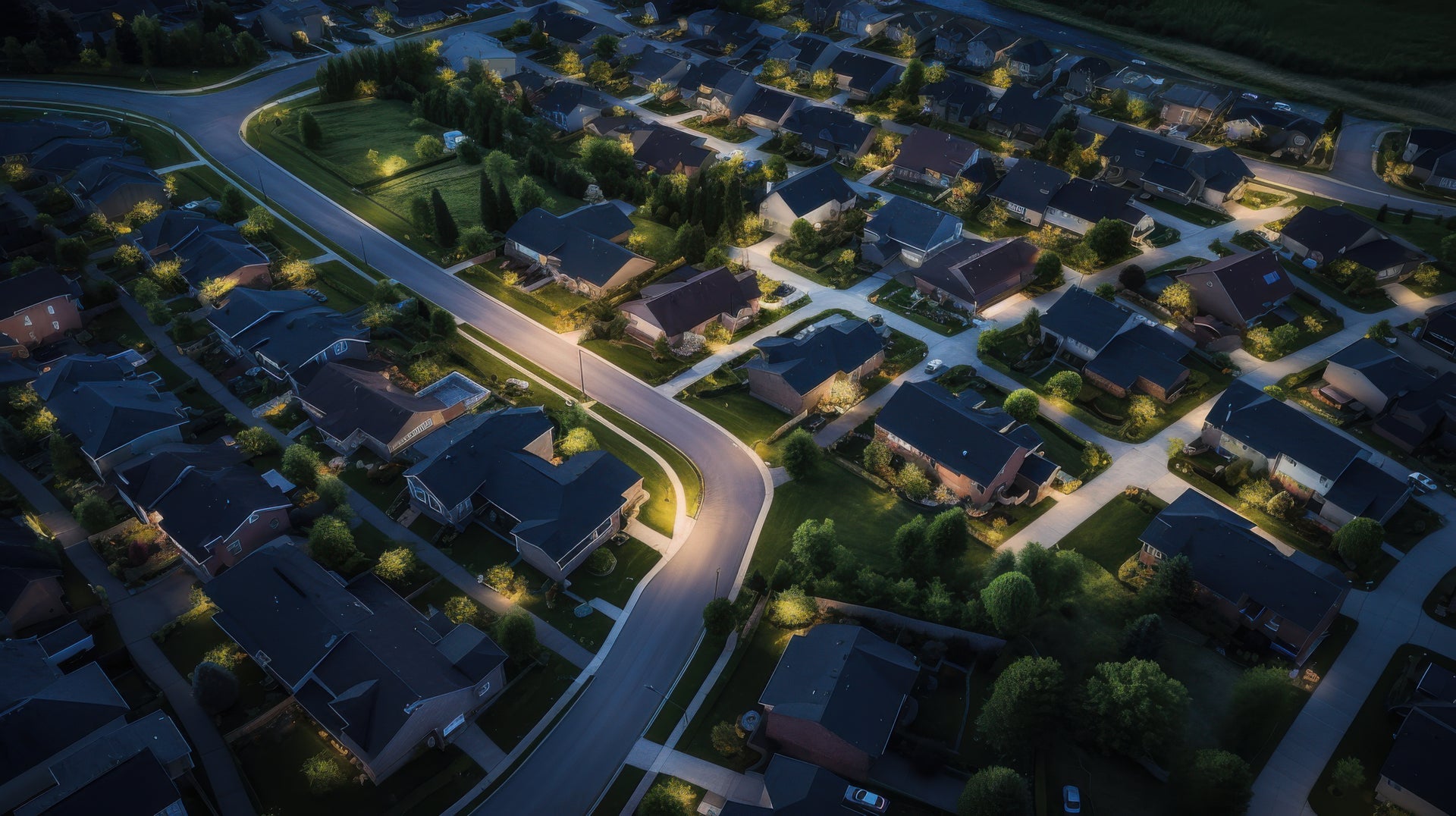It is no exaggeration to say that the Mountain-West Region has had the healthiest housing market in the United States during the pandemic. Boise, Idaho, epitomizes this. Following the most basic economic theory, housing demand increases will express themselves in some combination of price and sales increases. New home sales specifically are useful in that they proxy well for housing stock growth. Over the past year, Boise has measured strongly in both these dimensions.
Boise By The Numbers
The graph below shows year-over-year house price growth and growth in new home sales from Q4 2019 to Q3 2020 for all MSAs in the United States with over 100 new home sales each month.
The orange dot represents the Boise-Nampa metro area. Boise sits in second place in price growth, following only Coeur d’Alene, Idaho. In new home sales growth, Boise sits at 13th. Ranking highly in both sales and price growth is a rare combination. Typically, a market will express itself more aggressively in one variable than the other.
For instance, many Texas cities, including Dallas and Houston (purple and pink in Figure 1, respectively), ranked highly in new home sales but experienced more modest appreciation. This is because they have a highly ‘elastic’ housing supply. Such markets are characterized by having fewer regulations and a more shovel-ready geography.
Conversely, there are metro areas with high appreciation levels but fewer new home sales. In 2020, the pandemic restricted supply so most metro areas fall into this category; in Q2, there were a litany of markets with simultaneously strong appreciation but declines in new home sales. A large increase in both is the sweet spot that implies a considerable increase in demand.
Boise truly stands out not only because of its annual growth rate of new home sales but also the outright sales level. Typically, the fastest-growing areas are small markets with low sales levels. Boise, however, had over 10,000 new home sales from October 1, 2019 – September 30, 2020. Only two other metro areas in the top 20 by annual growth rate had a larger number of new home sales (Phoenix, Arizona, and Austin, Texas). When considering the level, this makes Boise genuinely exceptional.
Figure 2 adds a third axis to Figure 1 showing the number of new home sales. Boise is again the blue point. [1] It stands apart from the others due to its robust combination of sales and price growth.
Accounting for Success
What lies behind Boise’s success in the past year? First, it has a high baseline. Boise, like much the Western United States, has been in a perpetual state of growth. Boise’s population has grown more than 1 percent every year for the last 20 years.
Furthermore, it has a relatively less strict regulatory environment. According to the Wharton Residential Land Use and Regulation Index, Boise is in the bottom 25 percent of metro areas in terms of regulation stringency.[2]
Perhaps its most significant driver of growth, however, is its proximity to California and Washington. It is no secret that prices are high in coastal cities like San Francisco and Seattle, with median sales prices in 2020 of $1,300,000 and $600,000, respectively. Despite its strong appreciation, Boise is still much cheaper, at only $375,000[3]. Table 1 and Table 2 show the top 10 locations of home-purchase loan applicants for Boise from Q4 2019 to Q3 2020; this is a good proxy for migration, by metro area and state respectively. California metro areas and Seattle unsurprisingly dominate the metro area table, and California is well-ahead of all other places in the states table.Table 1: Out of City Home-Purchase Mortgage Applications for Boise by Metro Area
| Incoming Metro Area | Share |
|---|---|
| Los Angeles, CA | 16% |
| San Francisco, CA | 7% |
| Seattle, WA | 6% |
| Riverside, CA | 6% |
| Sacramento, CA | 5% |
| Mountain Home, ID | 4% |
| San Diego, CA | 4% |
| Portland, OR-WA | 3% |
| San Jose, CA | 3% |
| Salt Lake City, UT | 3% |
Source: CoreLogic mortgage dataTable 2: Out of City Home-Purchase Mortgage Applications for Boise by State
| Incoming State | Share |
|---|---|
| CA | 57% |
| WA | 10% |
| OR | 6% |
| UT | 5% |
| CO | 4% |
| AZ | 2% |
| NV | 2% |
| TX | 2% |
| IL | 1% |
| AK | 1% |
© 2021 CoreLogic,Inc., All rights reserved.
In addition to the high prices on the Pacific coastline, Boise has likely benefited from its low density. The pandemic has relocated many to the suburbs, and Boise has many affordable, detached single-family homes. In this way, the pandemic may have augmented a pre-existing trend. Indeed, Provo, Utah, and Phoenix, Arizona, exhibited similar outlying growth patterns to Boise.
Though the South can match it in terms of new home sales growth, the Mountain-West also has more robust price growth.
CoreLogic’s national HPI forecast is currently predicting a slowdown in price growth in 2021. Still, since the trends behind its success were already in place before the outbreak, we should expect Boise and others in the Mountain-West to continue their uniquely strong growth—and for homeowner interest in Treasure Valley to persist.
©2021 CoreLogic, Inc., All right reserved.
[1] All the variables are normalized to be on the same scale.
[2] The Wharton Index collects data from a survey of local residential land use regulatory regimes for over 2,450 municipalities across the U.S to produce a score that captures the overall stringency of regulation in the area. It is explained in depth in “Gyourko, J., Hartley, J., & Krimmel, J. (2019). The local residential land use regulatory environment across us housing markets: Evidence from a new Wharton index (No. w26573). National Bureau of Economic Research”.
[3] Median prices are collected from Corelogic’s public records data for December 2020.

